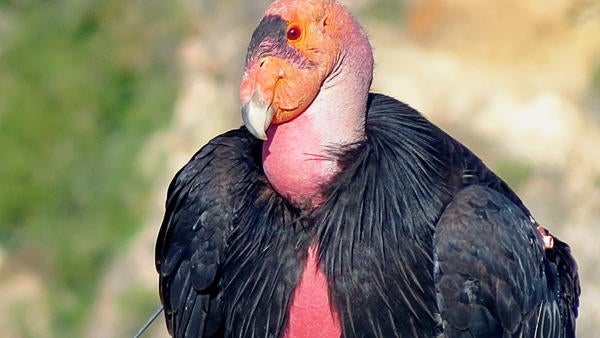Celebrating 40 years of protected status for the fringe-toed lizard
Plus other successes to celebrate as wellIt is hot and muggy. Some of you are getting hot rain, and unfortunately a few are getting lightning fires as well. Without the tram up and running (another casualty of COVID-19) there really isn’t anywhere with enough elevation to escape to. I’ve been stuck inside, which means I’ve been getting some reading and writing done.
The writing included finishing and submitting a draft manuscript I was invited to write for a special issue of the California Fish and Wildlife Journal, commemorating the 50-year anniversary of the California Endangered Species Act (CESA). Signed in 1970, this law preceded the federal Endangered Species Act by three years. Ten years later, in 1980, the Coachella Valley fringe-toed lizard was listed as endangered under the CESA, so this year the lizard is “celebrating” 40 years of protected status. My invitation was to reflect on how the lizard is doing.
Forty years ago, 95% of the lizard’s habitat was already lost to the development of golf course resorts and suburban sprawl. What was left was fragmented by roads, railroads, tamarisk windbreaks, freeways, and that sprawl. Direr than that, the lizard’s sand dune habitat requires unobstructed corridors delivering new sand to replace those grains of silica, mica and feldspar as they continue their march downwind. Every sand corridor was already, to one degree or another, compromised. Looking at those statistics, it would have been reasonable to just walk away; too much had already been lost. There were certainly many who would have welcomed waving goodbye to that damn lizard (as the then-mayor of Palm Springs, Frank Bogart, would call it). Thank goodness there were those who lacked reason and moved forward anyway. Amazingly, except for some small sand patches that could never be protected, almost all the lizard’s habitat that was occupied in 1980 is still occupied by that lizard today.
By no means does this mean that the fringe-toed lizard is secure. Those sand corridors are still compromised and could be lost altogether if the multiple roadway improvement projects planned for the valley are not designed with an attendant, front and center goal of keeping that sand moving onto the lizard’s habitat. There is also Sahara mustard, that scourge that was inadvertently introduced to the Coachella Valley with the first date palms. When rains favor the mustard, it forms a thick mat that strangles native annual plants, reduces insects and puts the lizard on a downward slide. Suffice it to say, the Coachella Valley fringe-toed lizard will most likely always be endangered, but as long as there are those unreasonable folks who care about our natural world, it should be here to celebrate the 100-year anniversary of the CESA.
There are other successes to celebrate as well. Bald eagles, peregrine falcons, and even California condors have made amazing recoveries. The condors were down to barely a couple handfuls of individuals left. The Audubon Society reasonably advocated for letting them go extinct with “honor” (whatever that means), letting those last individuals die wild. Yet there were again some unreasonable folks who argued the other side and won. Now, almost every time I visit the Grand Canyon I see wild, live condors, sometimes in flocks, acting every bit the way they (probably) did flying across the Pleistocene Era landscape of western North America.
That is not to say that they have all been successes. The California Fish and Game Commission met yesterday. While the headlines were focused on the Commission holding off on making any decision regarding listing Joshua trees, the Commission did agree to change the listing of the Mojave Desert tortoise from threatened to endangered. I’m not sure that action, while very much warranted, is reason to celebrate. The tortoise was listed as threatened under the CESA in 1989 (1990 for the federal Act), but they have been on a slow and steady slide to oblivion ever since. All efforts to reverse that slide have failed. Climate change, ravens, wildfires and invasive grasses are at the top of a long list of reasons for their decline. Each of these are tough problems that will require some clever, unreasonable folks to step in to make a difference.
I wanted to remind you all about our planned Naturalist Challenge on September 22nd. There are still several slots available for folks, in five minutes or less, to tell us about your current or recent projects, be they natural history/science, or changing out your landscaping to a more sustainable natives mix, or environmental education, or invasive weed removal, growing native plants, cooking with native plants, or ...
I’d say go outside – but maybe wait a week or two until it is a bit less muggy and perhaps a few degrees cooler.

